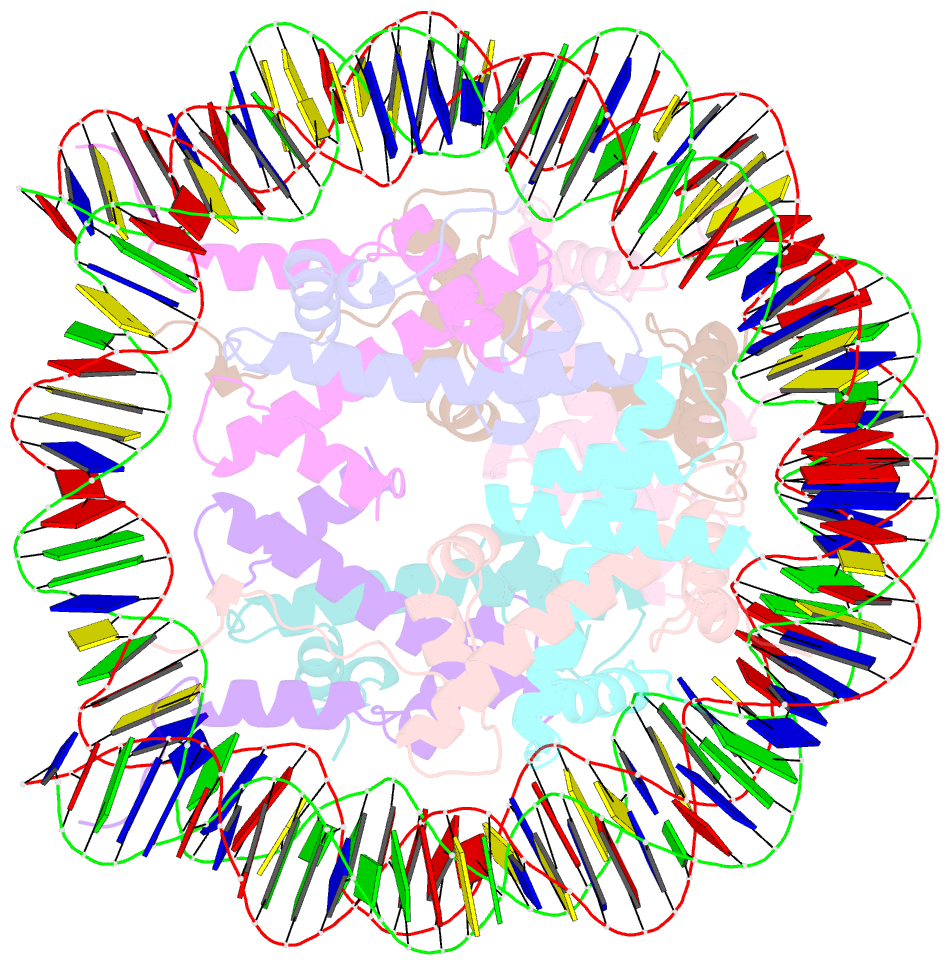Summary information and primary citation
- PDB-id
- 5av9; SNAP-derived features in text and JSON formats;
DNAproDB
- Class
- DNA binding protein-DNA
- Method
- X-ray (2.2 Å)
- Summary
- Human nucleosome core particle
- Reference
- Wakamori M, Fujii Y, Suka N, Shirouzu M, Sakamoto K, Umehara T, Yokoyama S (2015): "Intra- and inter-nucleosomal interactions of the histone H4 tail revealed with a human nucleosome core particle with genetically-incorporated H4 tetra-acetylation." Sci Rep, 5, 17204. doi: 10.1038/srep17204.
- Abstract
- Post-translational modifications (PTMs) of histones, such as lysine acetylation of the N-terminal tails, play crucial roles in controlling gene expression. Due to the difficulty in reconstituting site-specifically acetylated nucleosomes with crystallization quality, structural analyses of histone acetylation are currently performed using synthesized tail peptides. Through engineering of the genetic code, translation termination, and cell-free protein synthesis, we reconstituted human H4-mono- to tetra-acetylated nucleosome core particles (NCPs), and solved the crystal structures of the H4-K5/K8/K12/K16-tetra-acetylated NCP and unmodified NCP at 2.4 Å and 2.2 Å resolutions, respectively. The structure of the H4-tetra-acetylated NCP resembled that of the unmodified NCP, and the DNA wrapped the histone octamer as precisely as in the unmodified NCP. However, the B-factors were significantly increased for the peripheral DNAs near the N-terminal tail of the intra- or inter-nucleosomal H4. In contrast, the B-factors were negligibly affected by the H4 tetra-acetylation in histone core residues, including those composing the acidic patch, and at H4-R23, which interacts with the acidic patch of the neighboring NCP. The present study revealed that the H4 tetra-acetylation impairs NCP self-association by changing the interactions of the H4 tail with DNA, and is the first demonstration of crystallization quality NCPs reconstituted with genuine PTMs.





